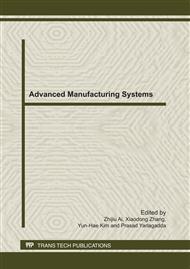p.295
p.299
p.313
p.317
p.321
p.326
p.332
p.336
p.342
Multiple-Response Surface Approach: Modeling and Optimization
Abstract:
Many products and processes have multidimensional characteristics and criteria. As these responses involve common parameters and processes, the response data are correlated. The quality and reliability improvement of such products and processes will typically involve multiple-response optimizations to find optimal operating conditions. Many of the current multiple-response optimization approaches assume a single-response uncertainty in the response models, and the uncertainty in the parameter estimates of the models. In this paper, we consider a Bayesian Model Average (BMA) approach to the modeling and optimization of variability of the predictions and the uncertainty of the model parameters. We further propose a Mahalanobis distance (MD) approach to account for the correlations among the response and the variation in the estimation of the response model.
Info:
Periodical:
Pages:
321-325
Citation:
Online since:
September 2011
Authors:
Price:
Сopyright:
© 2011 Trans Tech Publications Ltd. All Rights Reserved
Share:
Citation:


